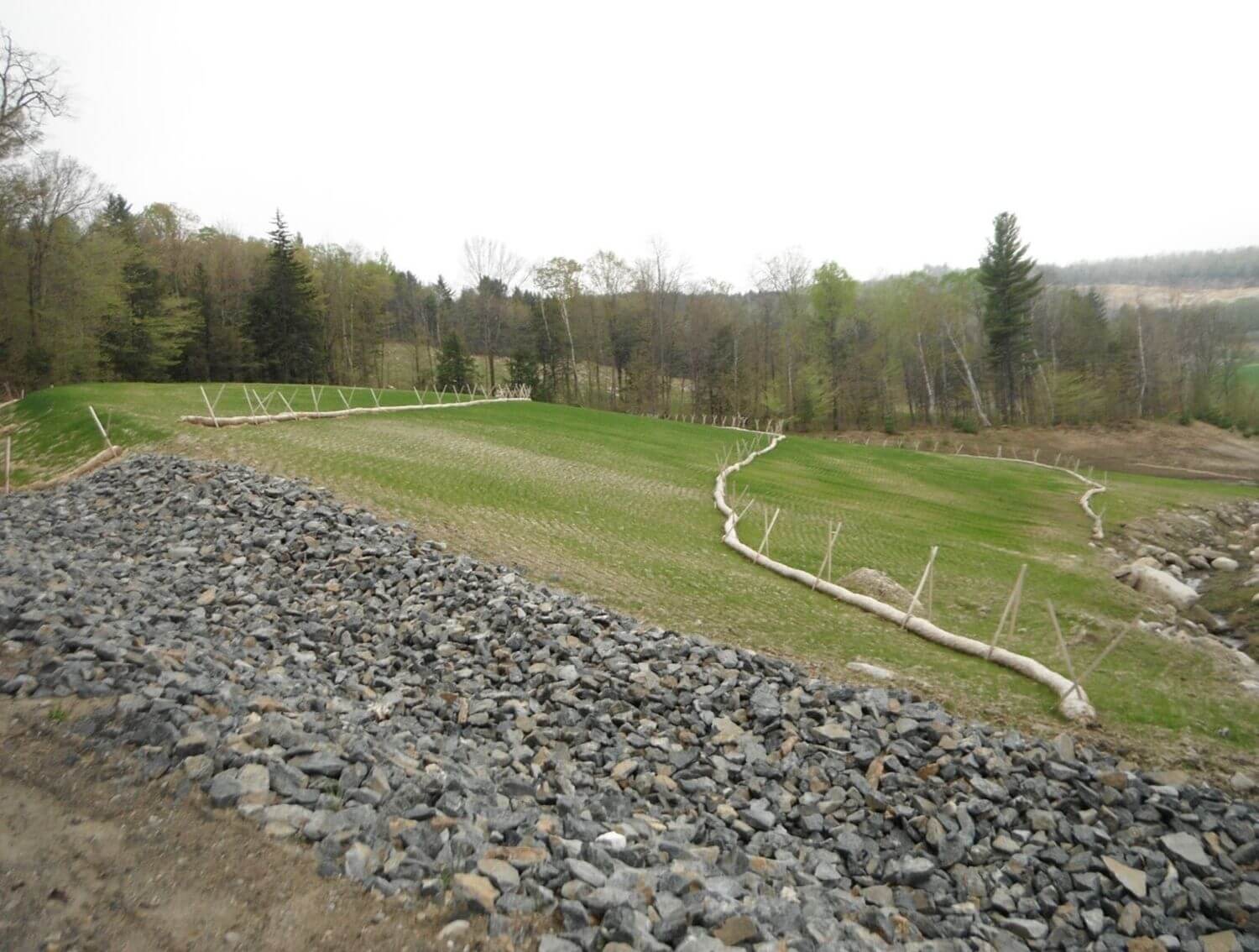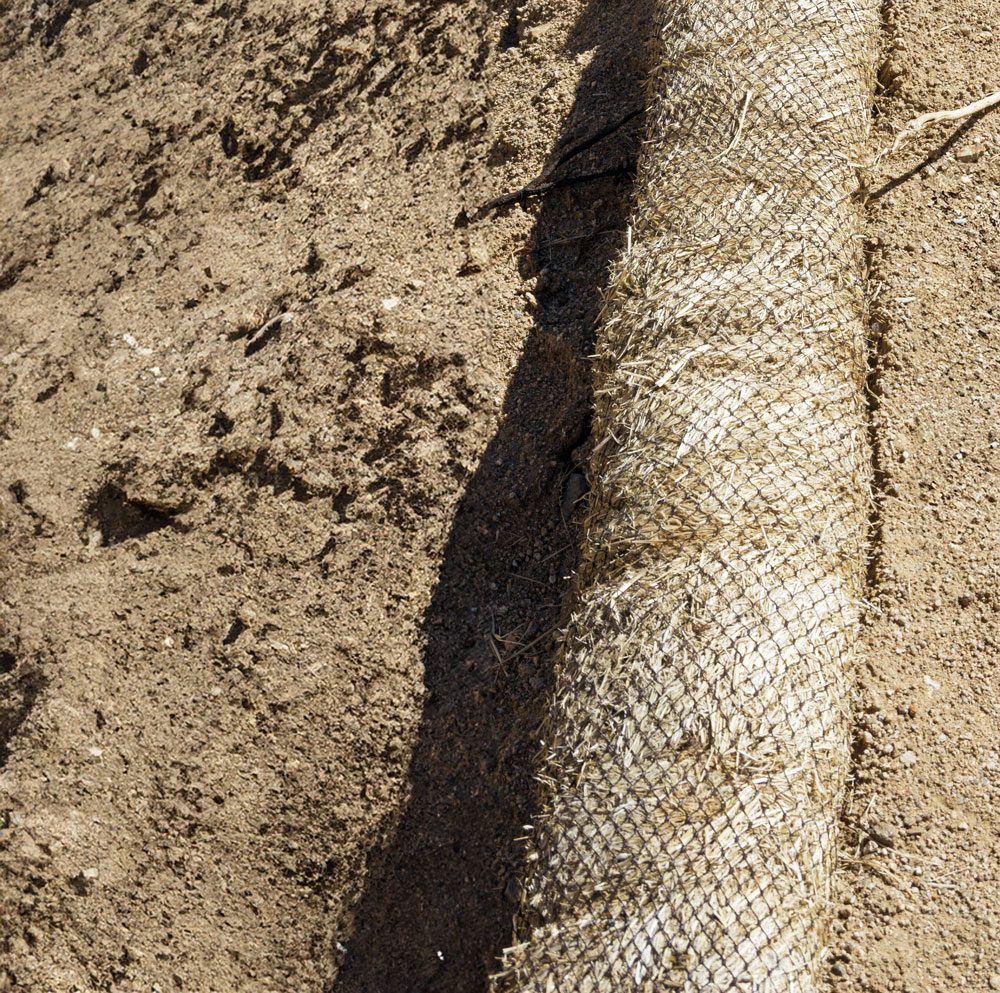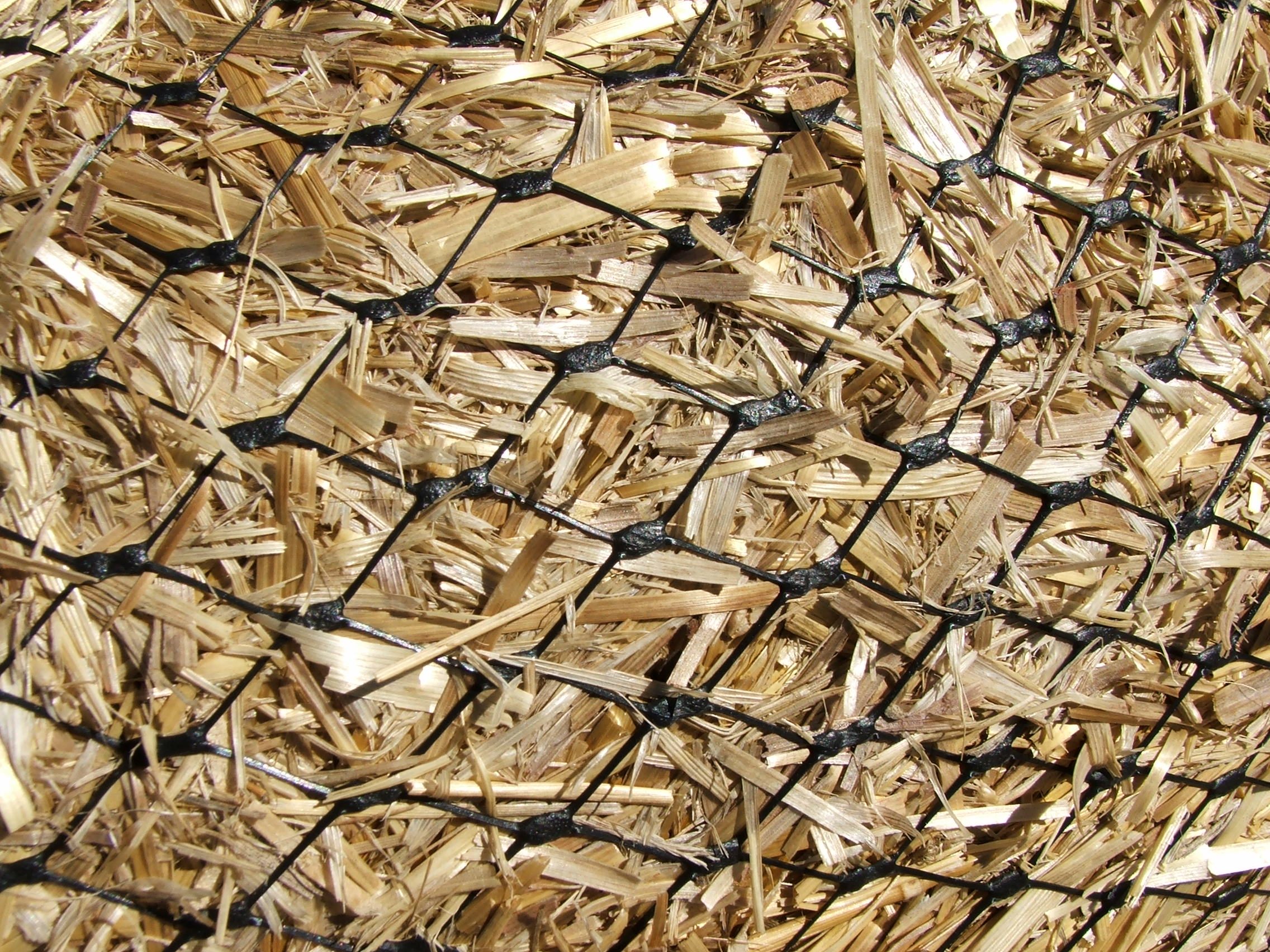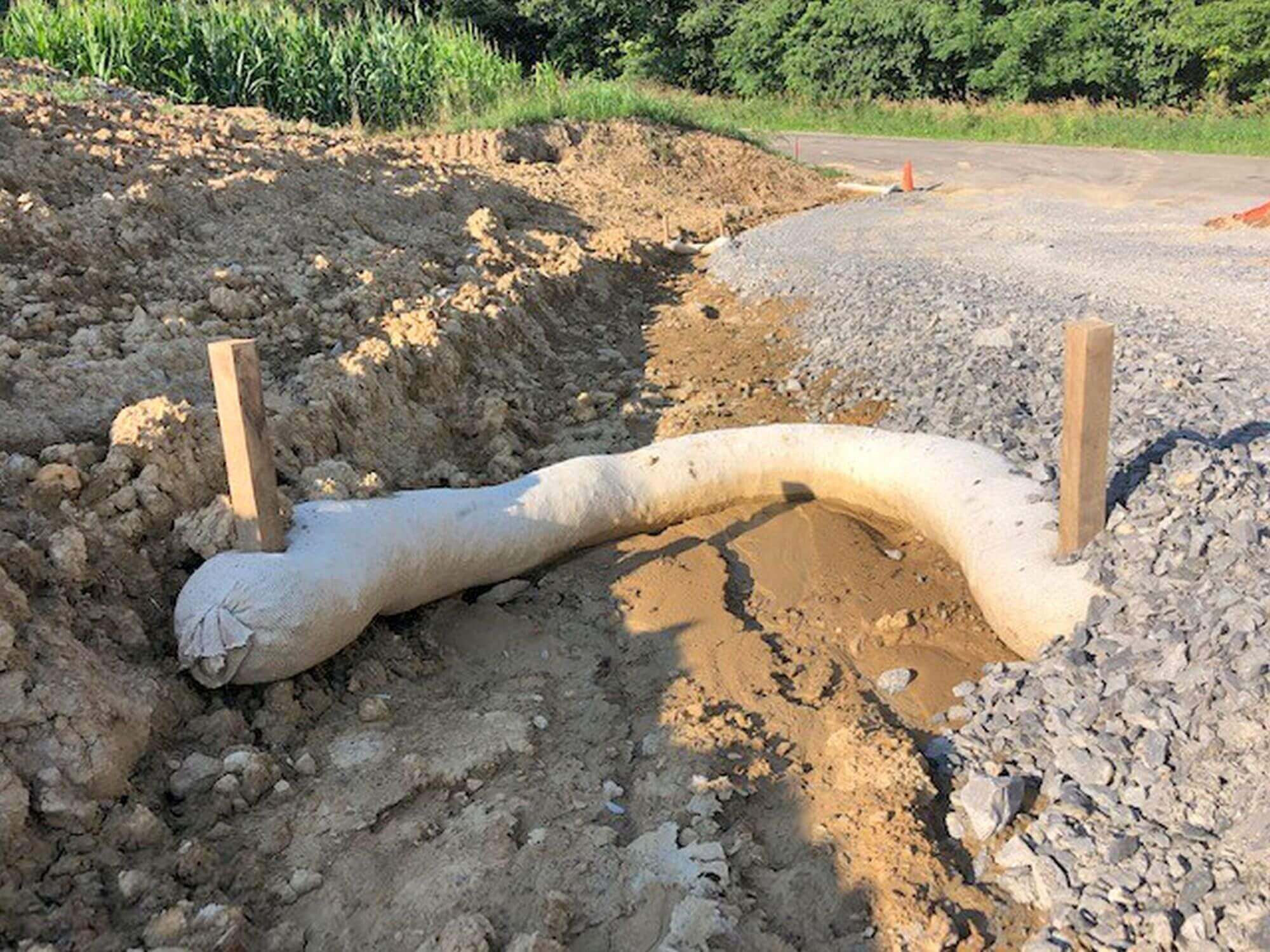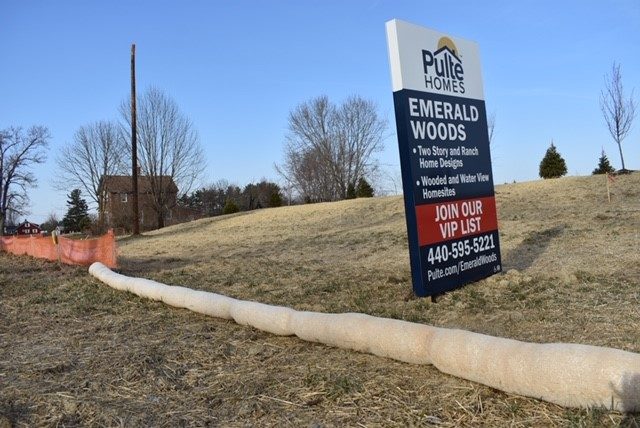In construction and land development, controlling erosion and managing sediment runoff are essential for safeguarding the environment and ensuring project success. Best Management Practices (BMPs) for sediment and erosion control are key to minimizing soil loss, protecting natural resources, and maintaining compliance with environmental regulations. A versatile tool in the BMP arsenal are straw wattles, which are a practical, efficient solution for erosion prevention and sediment containment.
What Are Wattles?
Wattles are cylindrical bundles of organic material, such as straw encased in durable netting, designed to slow water flow, trap sediment, and prevent erosion. These versatile tools support both sediment and erosion control BMPs, making them an essential component of comprehensive site management. Installed along slopes, perimeters, storm inlets, roadways, and ditches, wattles reduce runoff velocity, minimize soil displacement and prevent sediment from leaving the site.
Their lightweight, flexible design allows for quick installation, while their organic fill provides an eco-friendly solution for temporary use. Beneficial across a variety of applications, straw wattles offer a reliable, adaptable solution that helps contractors stay compliant with environmental regulations while protecting natural resources.
Register for a Virtual Lunch & Learn Session
Deepen your understanding of inlet protection and explore the latest trends and innovations in the field. During this session industry experts will share valuable insights, practical tips, and real-world case studies.
Earn 1 PDH Credit.
Applications of Straw Wattles
Slope Interruption for Erosion Control
Straw wattles are a vital component of erosion control, particularly on sloped terrain, where they serve as interruption barriers to break up surface water flow and minimize soil displacement. Installed along contour lines or in staggered patterns, wattles slow runoff velocity, preventing it from gaining momentum and forming gullies. This controlled flow reduces the risk of large-scale soil erosion and protects the integrity of the slope. By absorbing and dissipating water energy, straw wattles help stabilize loose soil, providing crucial protection for freshly graded areas or during vegetation establishment.
Perimeter Control for Sediment Containment
Straw wattles create an effective perimeter barrier around construction sites, preventing sediment from leaving disturbed areas and entering sensitive zones like roadways, storm drains, or natural waterways. Positioned along the project boundary, these wattles capture sediment-laden runoff, filtering out sediment particles before they escape the site. Their easy installation and low-profile design make them ideal for temporary perimeter control, ensuring compliance with environmental regulations without hindering site accessibility.
Inlet Protection for Stormwater Management
When placed around storm drain inlets, straw wattles provide an essential line of defense, capturing sediment and debris before it enters the drainage system. In the context of inlet protection, straw wattles prevent clogging, reduce sediment discharge into stormwater infrastructure, and protect downstream waterways from contamination. Their low cost and quick installation make them a practical choice for protecting storm drains throughout the construction process.
Check Dams for Runoff Control
Straw wattles function effectively as check dams, managing water flow through roadside ditches, swales, and other linear drainage channels. By slowing water as it moves through these pathways, wattles allow sediment to settle before it can be transported further downstream. Temporary ditch checks using straw wattles reduce scouring and erosion within the channel, preserving the ditch’s shape and functionality. Their ability to retain sediment and control water flow ensures proper drainage while protecting surrounding areas from sediment migration and erosion.
An Eco-Friendly Solution
Wattles filled with biodegradable materials offer an environmentally sustainable erosion control solution. Over time, these materials decompose naturally, enriching the soil and promoting vegetative regrowth without leaving behind synthetic waste. In areas requiring temporary erosion control, biodegradable wattles eliminate the need for removal, reducing labor costs and environmental impact. When combined with biodegradable netting, the entire wattle assembly provides an eco-conscious, high-performance solution that aligns with environmentally responsible construction practices.
The Essential Role of Netting in Straw Wattles
Netting is the backbone of many sediment control BMPs, providing the structural integrity needed for products like straw wattles and filter socks. In the case of straw wattles, the netting is what holds the organic material together, ensuring durability during installation and effectiveness in trapping sediment and reducing runoff. Without high-quality netting, wattles risk rupturing, losing shape, or failing under heavy flow conditions—compromising their role in erosion and sediment control.
MKB Company’s wattle netting products are engineered to meet the exacting demands of sediment control applications, maximizing performance and reliability across a variety of site conditions. Extruded netting, made from durable polyethylene in black or green, is the most commonly used choice due to its reliability and strength. DiamondWattle netting is another durable choice, while the tight-knit polypropylene netting reduces dust and keeps rodents out. For eco-friendly projects, MKB also provides natural original netting made from 100% biodegradable cotton fiber, featuring a tighter knit for cleaner handling and reduced environmental impact. Additionally, the Natural+ netting, crafted from biodegradable wood fiber, offers a similarly tight weave, enhancing both handling and performance in demanding applications.
Register for Our Lunch and Learn Session
Ready to deepen your understanding of inlet protection and explore the latest trends and innovations in the field? Register for a virtual Lunch and Learn session, where industry experts will share valuable insights, practical tips, and real-world case studies. Don’t miss this opportunity to expand your knowledge, earn professional development hours, and connect with peers in the industry. Register now to secure your spot and take the first step towards mastering the art of inlet protection.


